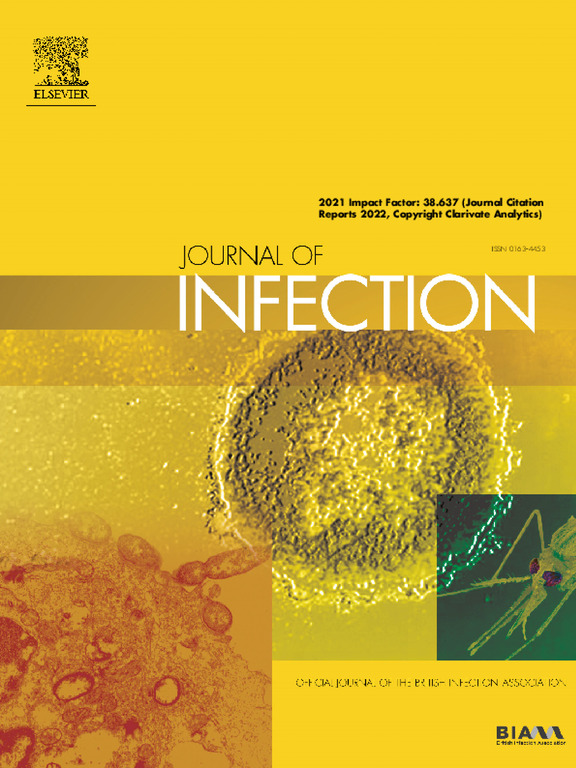Long-term morbidity and mortality of patients who survived past 30 days from bloodstream infection: A population-based retrospective cohort study
IF 14.3
1区 医学
Q1 INFECTIOUS DISEASES
引用次数: 0
Abstract
Background
For bloodstream infections (BSI), treatment and research have focused on short term mortality. The objective of this study was to describe the 1-year mortality and morbidity in survivors of bloodstream infection when compared to patients with negative blood cultures.
Methods
We conducted a population-based retrospective cohort study using Ontario administrative databases. Patients were included if they had a blood culture taken from January 1, 2014, to December 31, 2021, and survived past 30 days from blood culture collection. They were followed for the subsequent year. Outcomes were compared among patients with BSI and those without BSI, including all-cause mortality, stroke, myocardial infarction (MI), congestive heart failure (CHF) exacerbation, new start dialysis and admission to a long-term care (LTC) facility. Prognostic factors were balanced using overlap weighting of propensity scores, and a survival or competing risk model was used to describe time-to-event.
Results
Of 981,341 patients undergoing blood culture testing, 99,080 (10.1%) patients had a BSI and 882,261 (89.9%) patients did not. Outcomes were all more common among those with BSI as compared to those without BSI, including all-cause mortality (16,764 [16.9%] vs. 84,480 [9.6%]), stroke (1016 [1.0%] vs. 4680 [0.5%]), MI (1043 [1.1%] vs. 4547 [0.5%]), CHF exacerbation (2643 [2.7%] vs. 13,200 [1.5%]), new start dialysis (1703 [1.7%] vs. 2749 [0.3%]), and LTC admission (4231 [4.3%] vs. 13,016 [1.5%]). BSI had an adjusted hazard ratio of 1.10 (95% CI 1.08–1.12, P < 0.0001) for mortality, subdistribution hazard ratio (sHR) of 1.27 (95% CI 1.19–1.37, P < 0.0001) for stroke, sHR of 1.18 (95% CI 1.10–1.26, P < 0.0001) for MI, sHR of 1.05 (95% CI 1.01–1.10, P = 0.0176) for CHF exacerbation, sHR of 3.42 (95% CI 3.21–3.64, P < 0.0001) for new start dialysis and sHR of 1.87 (95% CI 1.80–1.94, P < 0.0001) for LTC admission.
Conclusion
BSI survivors have substantial long-term mortality and morbidity including stroke, MI, new start dialysis and functional decline leading to LTC admission.
因血流感染而存活超过 30 天的患者的长期发病率和死亡率:基于人群的回顾性队列研究
背景对于血流感染(BSI),治疗和研究的重点是短期死亡率。本研究旨在描述血流感染幸存者与血培养阴性患者相比的 1 年死亡率和发病率。在 2014 年 1 月 1 日至 2021 年 12 月 31 日期间进行过血培养并在血培养采集后 30 天内存活的患者均被纳入研究范围。随后一年对他们进行了随访。比较了有 BSI 和无 BSI 患者的结局,包括全因死亡率、中风、心肌梗死 (MI)、充血性心力衰竭 (CHF) 恶化、新开始透析和入住长期护理 (LTC) 机构。结果 在接受血液培养检测的 981,341 名患者中,99,080 名(10.1%)患者发生了 BSI,882,261 名(89.9%)患者没有发生 BSI。5%])、心肌梗死(1043 [1.1%] vs. 4547 [0.5%])、慢性阻塞性肺病恶化(2643 [2.7%] vs. 13,200 [1.5%])、新开始透析(1703 [1.7%] vs. 2749 [0.3%])和入住长期护理中心(4231 [4.3%] vs. 13,016 [1.5%])。BSI的调整后死亡率危险比为1.10(95% CI 1.08-1.12,P <0.0001),亚分布危险比(sHR)为1.27(95% CI 1.19-1.37,P <0.0001)。37, P < 0.0001),心肌梗死危险比(sHR)为 1.18 (95% CI 1.10-1.26, P < 0.0001),慢性阻塞性肺疾病恶化危险比(sHR)为 1.05 (95% CI 1.01-1.10, P = 0.0176),心肌梗死危险比(sHR)为 3.42 (95% CI 3.21-3.64, P < 0.0001);入住 LTC 的 sHR 为 1.87 (95% CI 1.80-1.94, P < 0.0001)。
本文章由计算机程序翻译,如有差异,请以英文原文为准。
求助全文
约1分钟内获得全文
求助全文
来源期刊

Journal of Infection
医学-传染病学
CiteScore
45.90
自引率
3.20%
发文量
475
审稿时长
16 days
期刊介绍:
The Journal of Infection publishes original papers on all aspects of infection - clinical, microbiological and epidemiological. The Journal seeks to bring together knowledge from all specialties involved in infection research and clinical practice, and present the best work in the ever-changing field of infection.
Each issue brings you Editorials that describe current or controversial topics of interest, high quality Reviews to keep you in touch with the latest developments in specific fields of interest, an Epidemiology section reporting studies in the hospital and the general community, and a lively correspondence section.
 求助内容:
求助内容: 应助结果提醒方式:
应助结果提醒方式:


